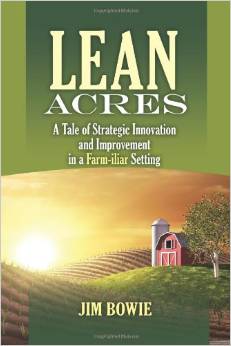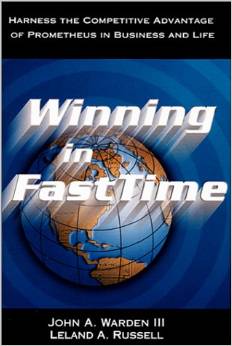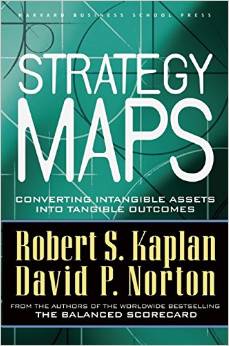Lean Acres: A Tale of Strategic Innovation and Improvement in a Farm-iliar Setting
Change can be hard. It is often difficult to conceive performing tasks in a different order, in a different place, at a different time, or in a different manner altogether. And this is only for the individual. When we talk about organizational change the difficulty increases exponentially with each individual that is added to the equation. Regardless of organizational improvement methodology (Lean, Six Sigma, ISO, Balanced Scorecard) as programs they are difficult to implement; as disciplines they are difficult to understand. This book uses as its basis a fable the story is not untrue, but it is not fact either. It is a story in which the group dynamics are real, the problems are valid, and the solutions legitimate. It asks you to consider a complex environment with multiple classes interacting between functional units with requirements that are perceived as exclusive and unique, and personalities that reinforce presumed boundaries. It asks you to follow along as all these individuals work together using the basics of four quality methodologies (Lean, Six Sigma, Theory of Constraints, and Business Process Reengineering) to address the problems they face, discover solutions together, and move forward in their continuous performance improvement journey.
More info →How to Succeed with Continuous Improvement: A Primer for Becoming the Best in the World
Your organizational transformation begins here!
Comprehensive, detailed, and easy to read and understand, How to Succeed with Continuous Improvement takes you through a real-life case study of one organization’s journey to a world-class continuous improvement process.
Winning in FastTime: Harness the Competitive Advantage of Prometheus in Business and Life
Developed at warp-speed and designed for overwhelming victory, the Desert Storm air campaign lit up the skies of Baghdad and changed strategic thinking forever. Now, John Warden - architect of the Desert Storm air campaign - and his partner, organizational consultant Leland Russell, have applied this proven approach to success to another kind of intense competition: the fast-changing world of 21st century business. Understand why the Prometheus Process is vital in today's world of crisis.
General H. Norman Schwarzkopf gave a ringing endorsement to John Warden’s new book, Winning in FastTime, with co-author Leland Russell. David Halberstam’s new book, War in a Time of Peace, suggested Col. Warden should have been on the cover of Time following the Gulf War
The system - Prometheus - is a mindset and a method for rapid, decisive strategic action. Its essence is simple: think strategically, focus sharply and move quickly. Leaders and managers of big-cap, mid-cap and startup companies, in high-tech finance, health care, and many other industries, have successfully applied Prometheus to meet the same kinds of challenges that you face.
Now, through clear, step-by-step directions and dramatic, behind-the-scenes stories, Winning in FastTime will explain Prometheus to you. Whether you are a CEO, a manager, a project leader, of simply a dedicated employee, this book will help you:
*Transform your organization into a nimble, market-leading winner;
*Design a Grand Strategy that everyone from the boardroom to the front line can share;
*Shape tomorrow...before it shapes you.
Winning in FastTime has a powerful message. You can control your destiny...if you are willing to shed yesterday's thinking about business strategy and organization...move fast and decisively...and make the future what you want it to be. Welcome to the world of Prometheus.
More info →Strategy Maps: Converting Intangible Assets into Tangible Outcomes
More than a decade ago, Robert S. Kaplan and David P. Norton introduced the Balanced Scorecard, a revolutionary performance measurement system that allowed organizations to quantify intangible assets such as people, information, and customer relationships. Then, in The Strategy-Focused Organization, Kaplan and Norton showed how organizations achieved breakthrough performance with a management system that put the Balanced Scorecard into action.
Now, using their ongoing research with hundreds of Balanced Scorecard adopters across the globe, the authors have created a powerful new tool--the "strategy map"--that enables companies to describe the links between intangible assets and value creation with a clarity and precision never before possible. Kaplan and Norton argue that the most critical aspect of strategy--implementing it in a way that ensures sustained value creation--depends on managing four key internal processes: operations, customer relationships, innovation, and regulatory and social processes. The authors show how companies can use strategy maps to link those processes to desired outcomes; evaluate, measure, and improve the processes most critical to success; and target investments in human, informational, and organizational capital. Providing a visual "aha!" for executives everywhere who can't figure out why their strategy isn't working, Strategy Maps is a blueprint any organization can follow to align processes, people, and information technology for superior performance.
More info →Selecting the Right Manufacturing Improvement Tools: What Tool? When?
Selecting the Right Manufacturing Improvement Tools offers an easy-to-read and comprehensive review of the most important current industrial improvement tools that every manufacturing or industrial executive, operational manager or engineer needs to know, including which tool to use for a particular type of manufacturing situation.
But his book goes beyond a simple comparison of improvement tools to show how these tools can be implemented and supported. Instead, it offers a broader strategic explanation of how they relate to one another, and their relative strengths and weaknesses in the larger context of the entire enterprise. It demonstrates how to use these tools in an integrated way such that they are not just be viewed as another “program of the month” or management fad. Selecting the Right Manufacturing Improvement Tools guides the use of these individual management tools within the need for aligning the organization, developing leadership, and managing change, all for creating an environment where these tools will be more successfully applied.
· Provides an excellent review of the most popular improvement tools and strategies - Lean Manufacturing, Kaizen, including 5S, Kanban, Quick Changeover, and Standardization, Total Productive Maintenance, Six Sigma, Supply Chain Management, Reliability Centered Maintenance, Predictive Maintenance (or Condition Monitoring), and Root Cause Analysis.
· Illustrates the use of each tool with case studies, using a fictitious company called "Beta International," which continues its journey to business excellence from author's previous book, Making Common Sense Common Practice
· Describes the foundational elements necessary for any tool to work - leadership, organizational alignment and discipline, teamwork, performance measurement, change management, and the role of innovation.
· Concludes with a recommended hierarchy for the use of the various tools, and provides enough information so that individual circumstances and issues can be related to these improvement tools, making better decisions and having greater business success.
Winning With Operational Excellence
The objective of this book is to help you achieve operational excellence in manufacturing via the tools of Lean Manufacturing and the Toyota Production System. With these concepts, tools, and methodologies you will be able to increase the wealth of your corporation and create higher quality and more value for your customers.
More info →







